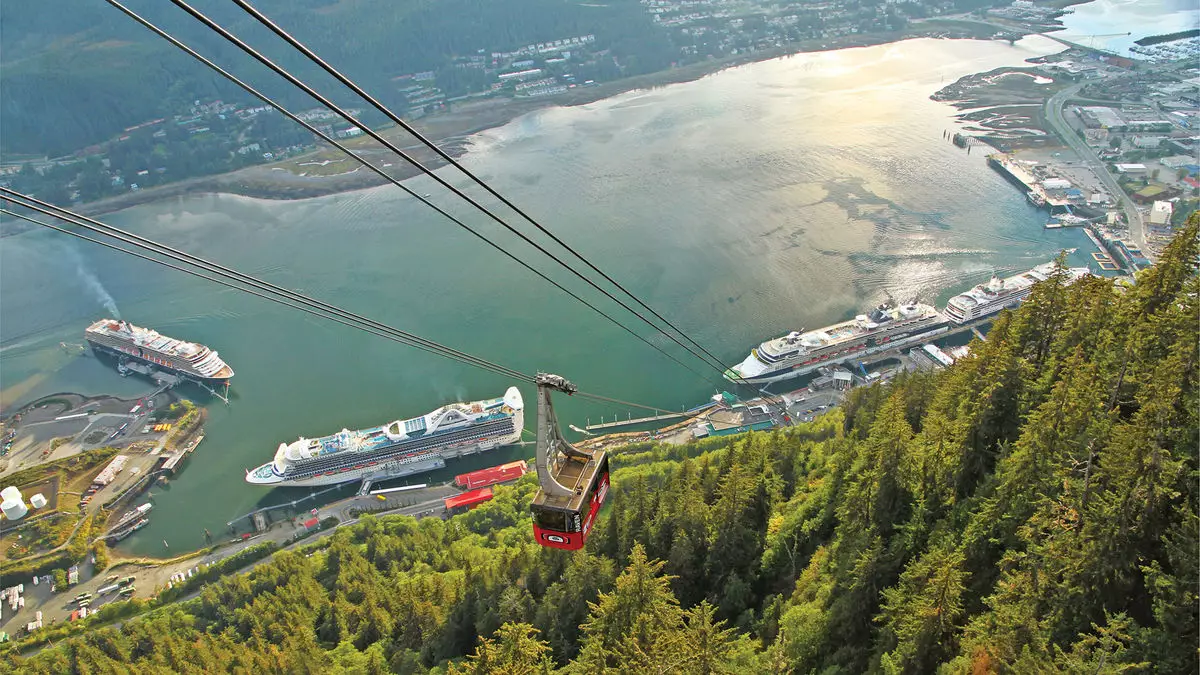Cruise tourism in Alaska presents a complex landscape, marked by a growing divide between communities that welcome the industry and those advocating for its reduction. While some localities are eagerly enhancing their port facilities and beckoning for more cruise traffic, others stare warily at the potential overreach of the cruise industry, emphasizing community sentiments and environmental considerations. This article explores the ongoing transformations in Alaska’s cruise tourism sector, the responses from various stakeholders, and the potential pathways forward for this vital revenue stream.
Russell Dick, the CEO of Huna Totem Corp., has been a vocal advocate for the expansion of cruise tourism beyond the traditional stops like Juneau. His insights reveal a broader perspective in Southeast Alaska where the allure of wilderness and unique experiences can serve as a magnet for tourists. The company has invested over two decades into developing port facilities at Icy Strait Point—an area designed to offer a rich, nature-filled experience. New developments, such as a double-berth port in Whittier and Port Klawock, highlight the proactive approach of certain entities in Alaska to diversify cruise itineraries.
Dick’s vision extends beyond Juneau; he emphasizes that potential visitors might find equal value in exploring other ports where authentic experiences are plentiful. The urge to expand and promote alternative ports is a reflection of the need to manage the strain on popular destinations while providing tourists with a truly Alaskan experience—a view that many may not initially associate with cruise tourism.
The sentiments surrounding cruise tourism are far from unanimous. Experts like Robert Morgenstern, senior vice president of Alaska operations at Carnival Corp., acknowledge the community pushback against cramming too many passengers into popular ports. He recognizes that there’s a practicality to exploring robust alternatives to Juneau, particularly as the state prepares for inevitable constraints on cruise capacities. However, he emphasizes that these alternatives must be appealing and have amenities that tourists seek.
Economically, many Alaskan communities are grappling with diminishing traditional industries like timber and struggling fisheries, which make the economic potential from tourism increasingly appealing. The foundational role that tourism plays in sustaining local economies cannot be understated. As Morgenstern notes, there exists a pressing need to understand the communities that thrive on cruise tourism and the economic lifelines they represent.
The call for longer cruise itineraries seems to be gaining traction, as companies like Carnival explore ways to lengthen travel plans through Alaska. By extending visits and incorporating diverse activities, cruise lines potentially mitigate the impact of capacity limits in traditional ports while simultaneously enhancing the appeal for repeat visitors. Some passengers will inevitably seek to explore the hidden gems of Alaska that may have gone unnoticed during prior visits.
This approach allows for a more immersive experience in Alaska, reorienting the cruise tourism model away from purely sightseeing to a more enriched, engagement-driven form of travel. As consumers increasingly favor experiences over traditional sightseeing, it becomes imperative for cruise lines to adapt to these changing preferences.
As the landscape of Alaska’s cruise tourism evolves, the challenge will be balancing economic benefits with community acceptance. The ongoing push for alternative ports not only reflects a desire to manage the crowds but also an awareness of the environmental and social responsibilities tied to tourism. Meanwhile, the growth in cross-gulf cruise volumes illustrates a desire for more comprehensive itineraries that minimize pressure on singular destinations while maximizing exploration throughout the vast state.
It remains to be seen how communities will react to these changes, but dialogue among stakeholders—cruise lines, local leaders, and communities—will be key in shaping the industry’s trajectory. As Alaska navigates this delicate balance, the potential for economic growth must be pursued thoughtfully, ensuring that both tourism and local lifestyles can coexist sustainably in the years to come. The future of cruise tourism in Alaska depends not just on increasing numbers, but on the development of experiences that resonate deeply with both visitors and Alaskan residents alike.

